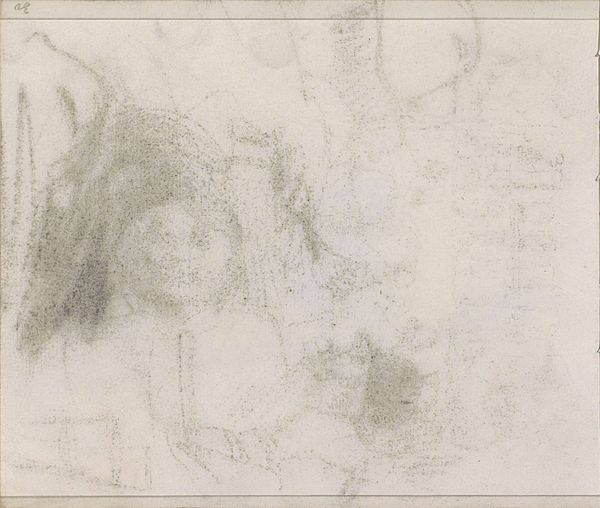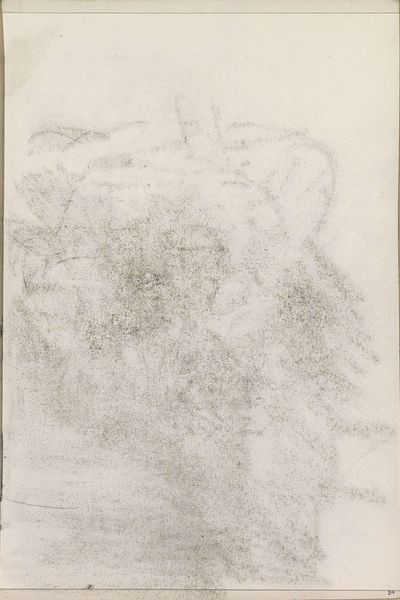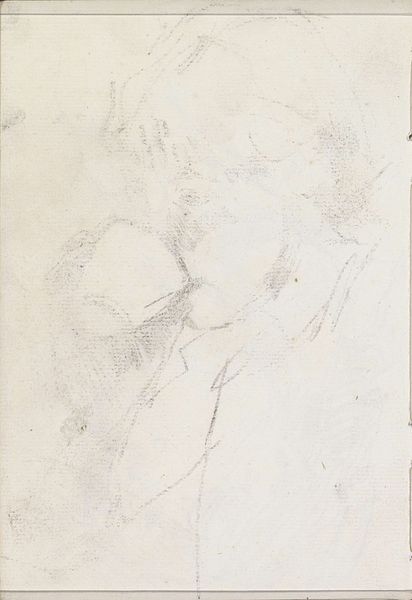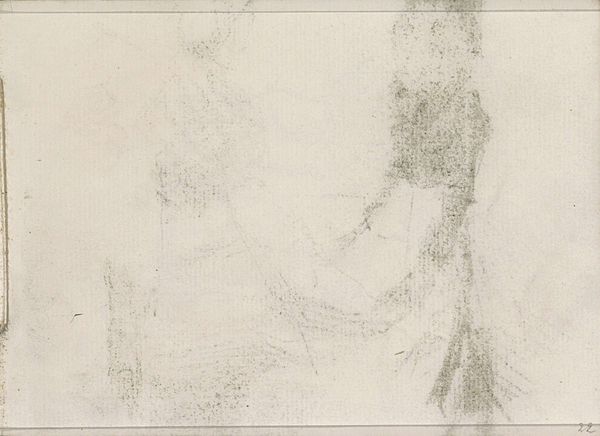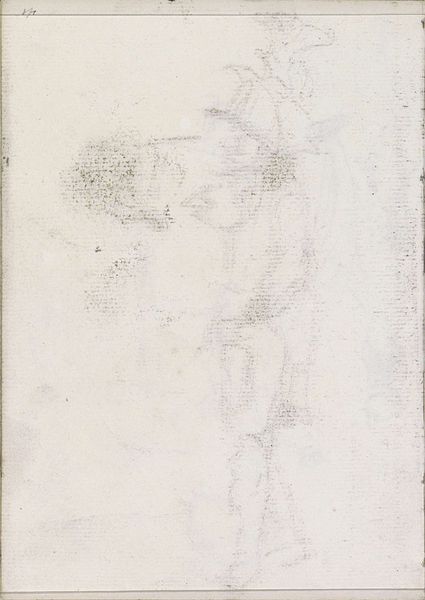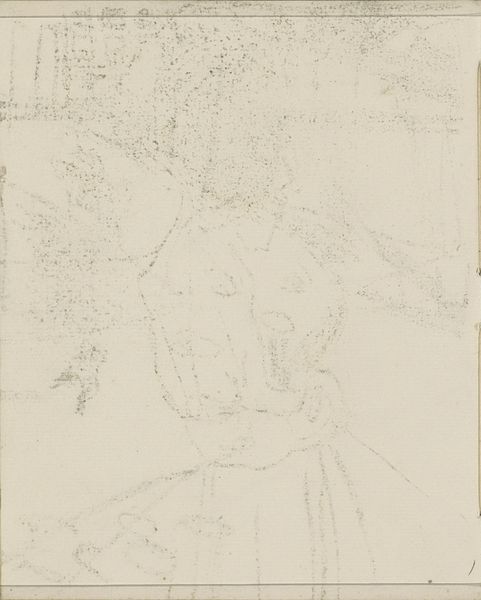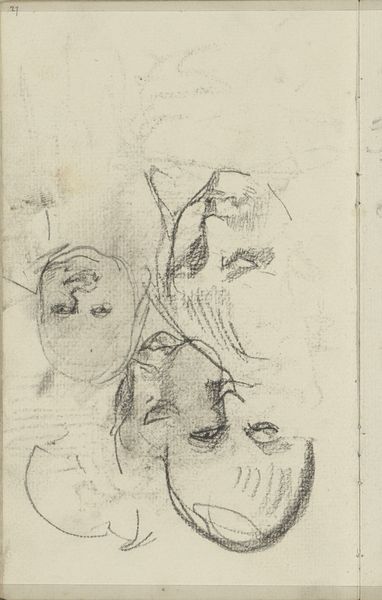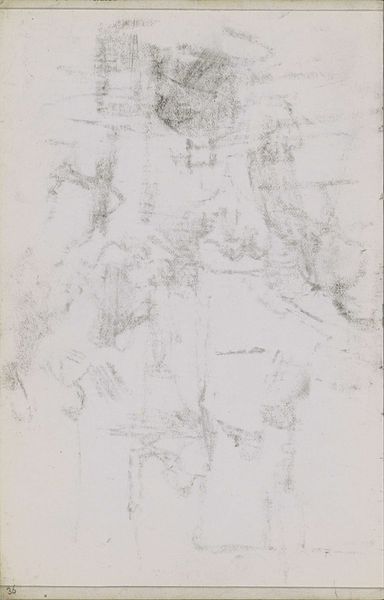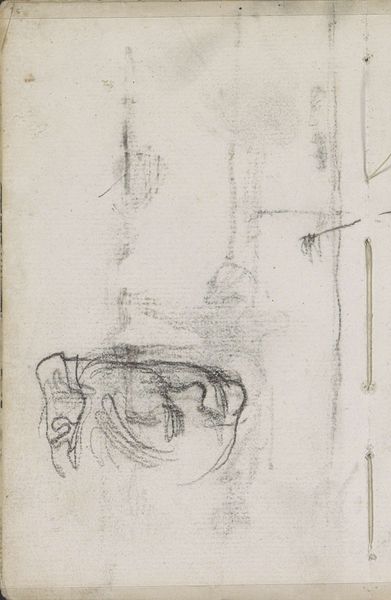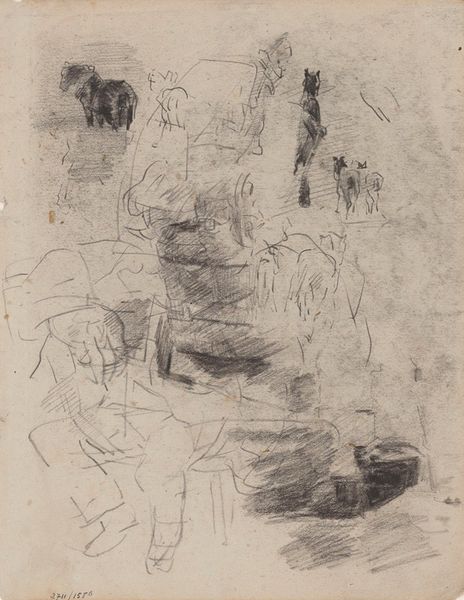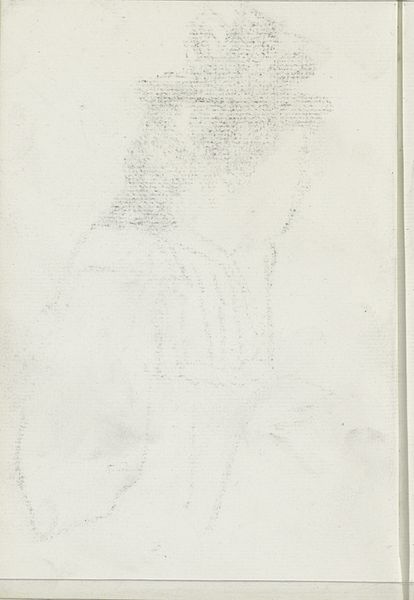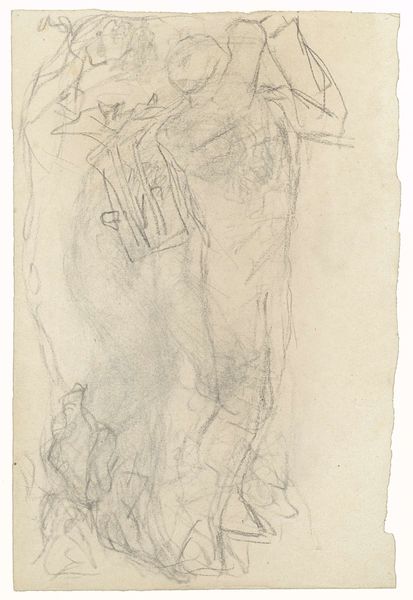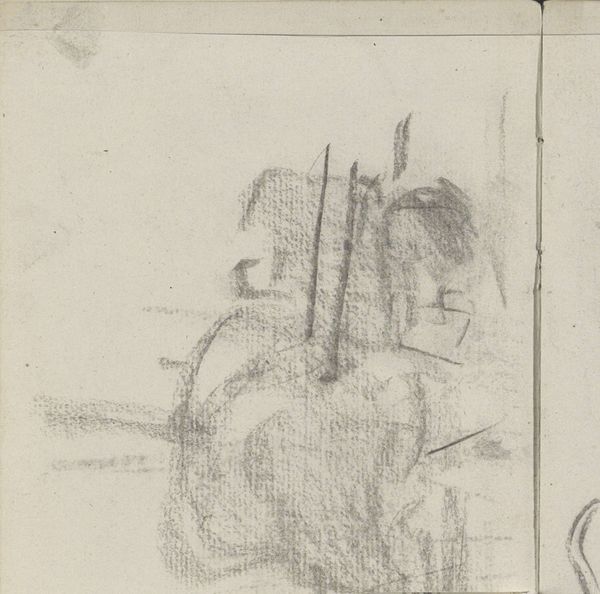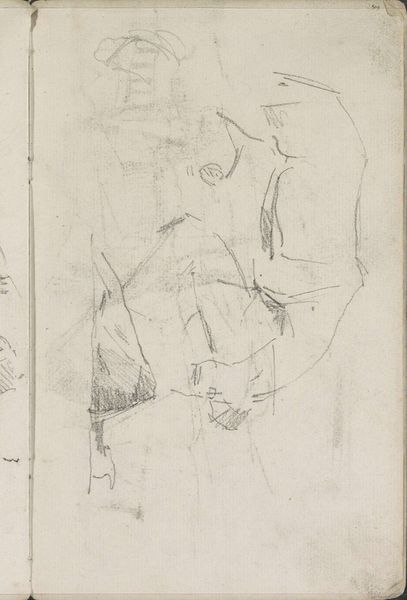
Copyright: Rijks Museum: Open Domain
Editor: Here we have Isaac Israels’s "Abklatsch van de krijttekening op pagina 41," a drawing made sometime between 1875 and 1934. It looks like pencil or graphite on paper, and it feels very gestural and immediate. What can you tell me about it? Curator: It’s interesting to consider this drawing in relation to the labor involved. Think about the production of graphite in the 19th century. Where did Israels source his materials? Was it mass produced, impacting cost, availability, and accessibility? Consider, too, that this is a "rubbing" of a chalk drawing, so already mediated through a process of transfer. How does that process influence our understanding of the final image and its relationship to the original chalk work? Editor: So you're focusing less on the "artistic skill" and more on the means of production, right? Like, how the graphite itself was made and how that influenced the work? Curator: Precisely. It's not simply about the individual’s expression. I’m questioning the hierarchies we place on artistic mediums. Drawing is often seen as preliminary, but consider the social and economic context that makes readily available and accessible graphite, a cheap material in comparison to paint, the foundation for creative labor. Who has access to such simple tools? And what kind of art emerges from it? Editor: That's a fascinating perspective! I hadn't really considered the graphite itself as being a key component of the art, but it really does change how I see the piece. Curator: Considering these overlooked details about artistic production enriches our perception, broadening what's valued in the artwork, as a work, and art history, as a discipline.
Comments
No comments
Be the first to comment and join the conversation on the ultimate creative platform.
